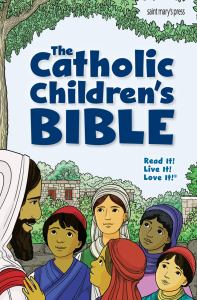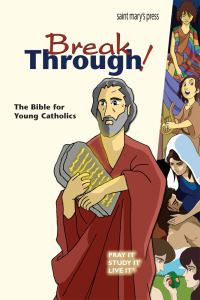- Home
- Issue 10: Care for Our Home
- Issue 9: Eco-Spirituality
- Issue 8: Interfaith Understanding
- Archives
- About us
- Contact
For Primary
Devotion to May as the mother of God and mother of the Church has been a consistent dimension of the Christian faith. Yet how does Mary remain relevant in today’s world and to today’s teens?
The following is resources are designed to assist you in your important work – dissecting Mary’s role in the Church and the lives of your students.
The Hail Mary
Hail Mary, full of grace.
Our Lord is with you.
Blessed are you among women,
and blessed is the fruit of your womb,
Jesus.
Holy Mary, Mother of God,
pray for us sinners,
now and at the hour of our death.
Amen.
Suggestions on how to use these prayers:
- Print in large font and have the children read together.
Adding an appropriate picture (or pictures) would to make it more meaningful.
This link explains the meaning of the prayer from the Gospel. Images such as the angel coming to Mary are ideal.
http://www.cptryon.org/prayer/child/mary.html
- Have each student prepare the prayer for homework by writing and illustrating it, and then displaying on a board or wall for everyone to see and read
- Have a display of rosary beads. Children can make a rosary bracelet of a decade (10 beads) of the rosary in their favourite bead colours. Explain that a Hail Mary is said for each bead
- Create an altar to Mary, with students bringing in seasonal samples from nature to celebrate Mary’s feast days: flowers, candles, bark, river pebbles, leaves, blossoms, gum nuts, feathers. Link Mary’s life and feast days to nature’s cycles and the seasons, especially winter, spring and beginning of summer when Mary’s feast days are most close together.
Scripture
Reading: Luke 1: 39–56
Text: Breakthrough!Bible, Pages 1495–1496
Suggested Classroom Activities
- Read the biblical verses aloud.
Explain the context of these verses:
- Mary visits her cousin Elizabeth, who was also expecting a baby (John the Baptist)
- Both women feel great joy and happiness that God is good to them
- Mary’s Song of Praise (verses 46–56) is known as the Magnificat and it’s a beautiful prayer to God and his goodness. It shows that Mary trusts God and that she is privileged to be chosen to be Jesus’ mother.
This reading is for the feast day of The Assumption. That is, the day Mary dies and her body and soul are taken up to heaven from her tomb. She is greatly honoured for saying ‘yes’ to God when asked to be Jesus’ mother. In this prayer, she lists all the things she is grateful to God for.
- Discuss what each student is grateful for.
Write it on the whiteboard and then create a permanent poster size display of their comments. On a large sheet of paper (blue: Mary’s colour) write all the things the students in class are grateful for. The heading: ‘God Has Done Great Things For Us’.
- Make a stained glass collage from coloured cellophane paper to honour Mary. Have an outline of Mary behind the stained glass effect
- Play the Ave Maria song—more recent versions by Michael Buble and Celtic Woman. Allow students to reflect on Mary’s life. Explain the Latin version is the Hail Mary in English and now that ancient language is no longer in use, but was once used in Mass.
Upcoming Feast Days
Through August to December, the Liturgical year contains an array of feast days celebrating Mary’s life, her devotion to God and her importance within the Church.
August 15 Assumption of the Blessed Virgin
Commemorates the death of Mary and her body AND soul being taken up to heaven from her tomb.
August 22 – The Queenship of the Blessed Virgin*
Celebrates Mary’s reward for accepting to be the mother of Jesus. Her titles include Queen of Heaven and Queen of Angels.
Sept 8 – The Birth (nativity) of the Blessed Virgin
Mary’s birthday. We celebrate Mary’s birth to Jaochim and Ann.
Sept 12 – The Most Holy Name of the Blessed Virgin
Celebrates the name of Mary – Miriam, in the Jewish tradition. Mary was called many other names, such as Queen of peace and Star of the Sea.
Sept 15 – Our Lady of Sorrows
We recognise Mary for her suffering. The title “Our Lady of Sorrows” refers to Mary’s suffering during the passion and death of Christ.
Sept 21 – Presentation of the Virgin Mary
This date celebrates when Mary’s parents dedicated her to God in the Jewish temple when she was 3 years old.
Oct 7 – Our Lady of the Rosary
Celebrates Mary protecting us and reminds us to pray to her.
Dec 8 – Immaculate Conception of the Virgin Mary*
Commemorates the feast day when Mary was conceived (pure).
*Most important feast days.
Suggested Classroom Activities
- Make a Happy Birthday Card to Mary (Sept 8).
Encourage students to use Mary’s favourite colour: blue. They may like to copy Mary from some of the more popular holy cards e.g. Fatima, Lourdes, Guadalupe.
- Make a crown for Mary for Queenship of Mary Feast Day
- Bring a birthday cake or cupcakes to share for Mary’s birthday. Use blue and white icing or blueberries. Each child brings a gift for Mary— something they’ve made or a prayer or a good deed they will do
- Create a Mary garden (or a large pot of changing flowers). Mary’s favourites (myth) are roses, lilies, irises, winter roses, violets, lilies of the valley, marigolds, carnations, bluebells and rosemary
- Review the range of artworks devoted to Mary. Research and discuss.
Look at art depicting Mary. What are the common features? Compare the orthodox icons (Theotokos) to Renaissance art: how do they differ?
http://blog.theotokos.co.za/?page_id=851
- Why do different cultures represent Mary in their own individual way?
See Latin American, Indigenous, African and Western styles of Mary images.
- Create a calendar of Marian feasts. Decorate.
- To Celebrate the Assumption, create a triptych (three panels made from cardboard or art paper). In groups, students create the panels and decorate to illustrate Mary being taken up to heaven by the angels.
Google images of Mary and the Assumption by famous artists such as Rubens, Titian, Poussin
http://tinyurl.com/koj6mdx
Use gold paint, cotton balls for clouds, angel pictures, flower petals, crown (halo) of stars around Mary’s head, hearts for love.
- List the names Mary is known by to highlight her importance as Jesus’ mother, Mother of the Church and our spiritual mother.
See Litany of Loreto:
http://www.ewtn.com/faith/teachings/maryd6f.htm
- Create a biography or timeline of Mary’s life using the Gospelsand the mysteries of the rosaryas references. Show on the map where she lived and travelled to and from and what is happening there today (link with curriculum about world events/history/social studies). Create a documentary, using mediums such as film or PowerPoint.
Mary has appeared on earth many times since her death. In small groups, research places she has appeared and the miracles she has performed there,e.g. Fatima, Lourdes, Africa (more recently). Present the findings to the class.
Lesson Plan
The lesson plan for Mary is available from the button below.





